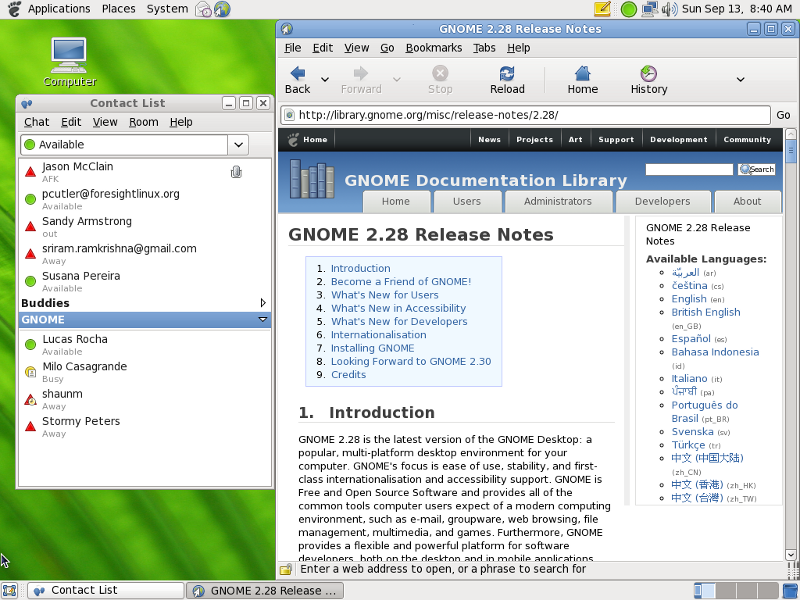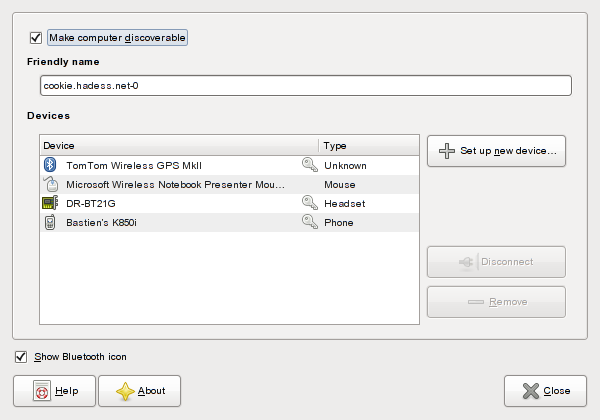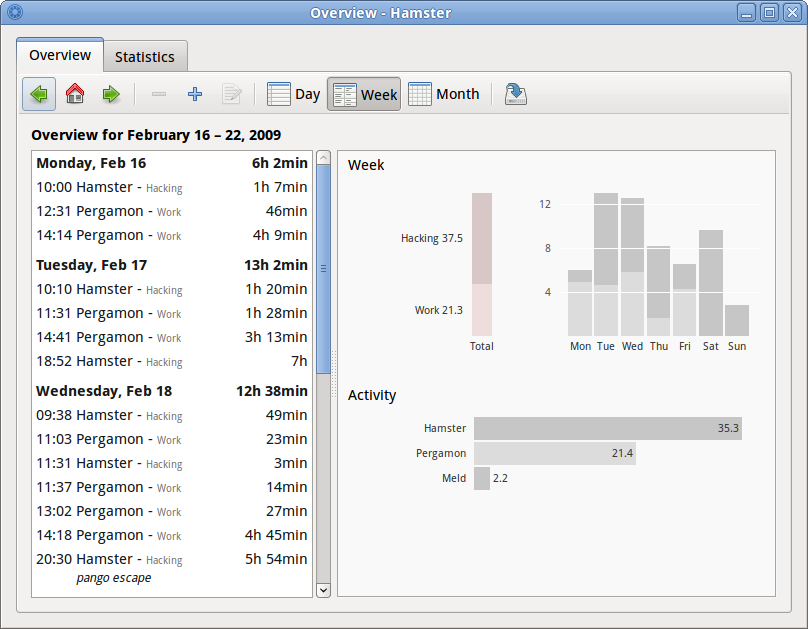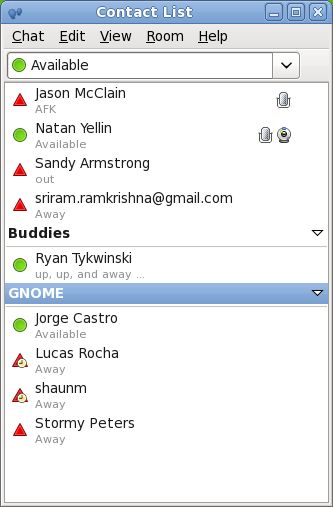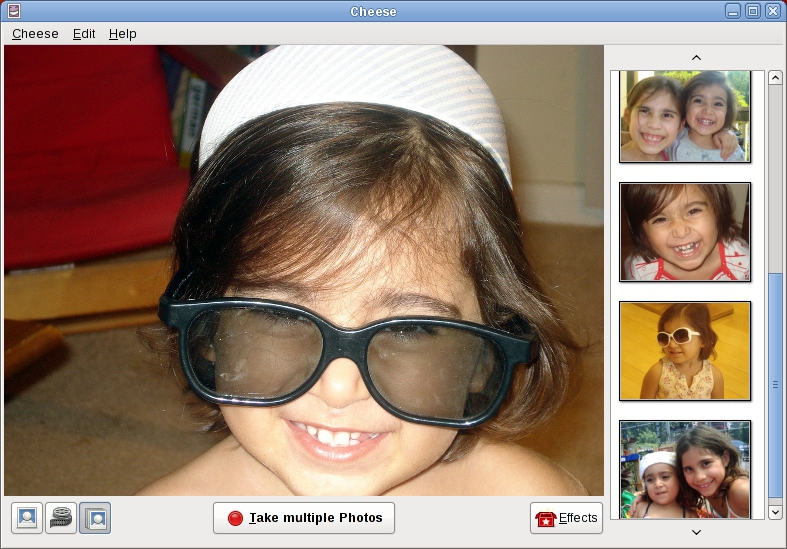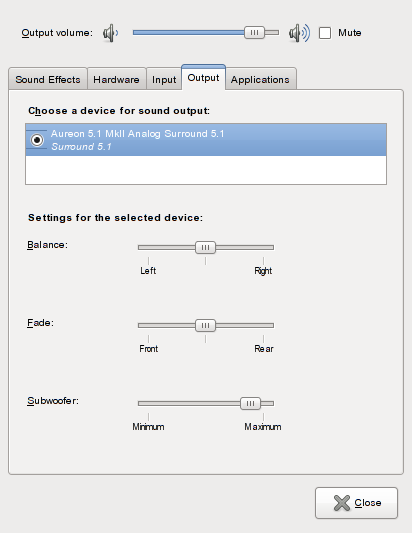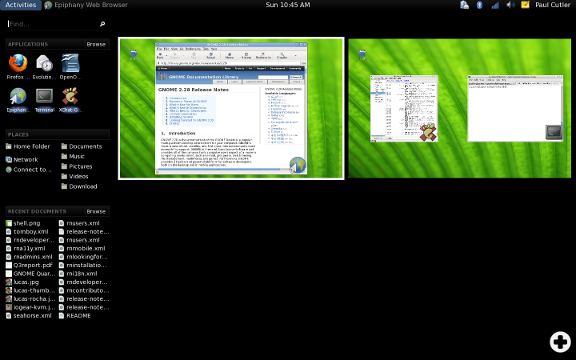GNOME 2.28 Release Notes
1. Introduction
GNOME 2.28 is the latest version of the GNOME Desktop: a popular, multi-platform desktop environment for your computer. GNOME's focus is ease of use, stability and first-class internationalisation and accessibility support. GNOME is Free and Open Source Software and provides all of the common tools computer users expect of a modern computing environment, such as e-mail, groupware, web browsing, file management, multimedia and games. Furthermore, GNOME provides a flexible and powerful platform for software developers, both on the desktop and in mobile applications.
The GNOME Desktop is released every six months and contains many new features, improvements, bug fixes and translations. GNOME 2.28 continues this tradition. To learn more about GNOME and the qualities that distinguish it from other computer desktop environments (such as usability, accessibility, internationalisation, and freedom) visit the About GNOME page on our website.
Join us today and see what a difference you can make.
GNOME 2.28 includes all of the improvements made in GNOME 2.26 and earlier. You can learn more about the changes that happened in GNOME 2.26 from its release notes.
2. Become a Friend of GNOME!
During the 2.26 development cycle the GNOME Foundation also launched a new Friends of GNOME programme. Now supporters can sign up to help the GNOME Foundation with recurring donations. Thanks to user feedback during the 2.28 cycle, the Friends of GNOME programme now supports the ability to choose the dollar amount given monthly.
Friends of GNOME is a way for individuals to support the GNOME project's mission of providing a free and open source desktop for everyone regardless of ability. With no advertising or outreach, the foundation has raised over $20,000 in 2009 from generous individuals. That money has contributed to the funds for hackfests, local events and programmes which in turn have enabled the GNOME project to create internationalised, accessible and easy-to-use desktop software for both traditional desktops and for mobile devices.
Head over to the Friends of GNOME website.
3. What's New for Users
The GNOME Project's focus on users and usability continues in GNOME 2.28 with its hundreds of bug fixes and user-requested improvements. The sheer number of enhancements makes it impossible to list every change and improvement made, but these notes aim to highlight some of the more exciting, user-oriented features in this release.
- 3.1. Become Unwired
- 3.2. Track Your Time Better
- 3.3. Empathy Instant Messenger
- 3.4. Epiphany Web Browser
- 3.5. Media Player Improvements
- 3.6. Smile for the Camera
- 3.7. Annotate Your PDFs
- 3.8. Fade In and Out
- 3.9. But Wait, There's More…
3.1. Become Unwired
GNOME 2.28 includes the first release of the GNOME Bluetooth module to help users manage their Bluetooth devices. GNOME Bluetooth supports hundreds of Bluetooth devices, including mice, keyboards and headsets. GNOME Bluetooth includes PulseAudio integration for Bluetooth headsets and headphones.
GNOME Bluetooth also includes support for Internet access through your mobile phone. After pairing your mobile phone with GNOME Bluetooth, NetworkManager will include an entry to use your mobile phone for Internet access.
3.2. Track Your Time Better
The Time Tracker applet, which helps you track your time and tasks, includes a number of new improvements.
An all-new Overview screen is now included, which merges the category and period graphs to present a cleaner overview to the user. Colours are also used for the first time, making it easy to view the proportion of time used to complete tasks.
Other feature updates include improved auto-complete support allowing you to update the start time on the fly, improved support for late-night workers and the ability to add earlier tasks that have been completed. Lastly, the export functionality has a number of improvements, including the ability to filter activities by category and date prior to export and new simple export types: iCal to import into Evolution, Google Calendar and other clients, XML and TSV (Tab-Separated Values), which works well with spreadsheets.
3.3. Empathy Instant Messenger
GNOME's instant messaging and communication application, Empathy, built on the Telepathy communications framework, has gained a number of new and important features to help users communicate.
The contact list has been improved in a number of ways. You can set your status directly by entering it as text, or set it from a previously-set status. Reorganising your contacts has been made easier as dragging and dropping a contact will move it, instead of copying it. A View menu is now included, giving you quick access to sorting contacts, viewing offline contacts and changing your contact list size preferences.
The conversation dialogue now supports a number of new themes, including Adium message styles. "Users" in the user list now have a tooltip; the user list in chat rooms can be hidden; the Contact menu has been removed from the Conversation menu; and if your name is mentioned in a chat room or conversation, that tab's text will become red.
Audio and video chats can now be made fullscreen, and if a contact does not have video, their avatar will be displayed. A redial feature has also been added, making it easier to reconnect.
Users are now able to share their desktop with Empathy contacts using the GNOME Remote Desktop Viewer, Vino.
Geolocation support using Geoclue has been added for XMPP contacts, such as Jabber and Google Talk. You can view a contact's location by hovering your mouse over their contact name in the contact list, in the information dialogue or in the Map View. Empathy also supports a reduced accuracy mode for users who wish additional privacy. Google Talk users can view a contact's location, but cannot publish their location as Google does not use PEP.
Empathy also includes all-new documentation focused on helping users to learn how to perform specifics tasks within Empathy.
3.4. Epiphany Web Browser
The GNOME Web Browser, Epiphany, has switched to WebKit from Gecko for its rendering engine. With the exception of some performance enhancements, this change should be invisible. Long-term, the switch to WebKit will have significant benefits to Epiphany users. Switching to WebKit also fixes a number of long-standing bugs in Epiphany due to the old Gecko-based backend. You are encouraged to test this new version to confirm if your older problems have been solved.
One bug users may experience in Epiphany, due to the change to WebKit, is not being able to save logins and passwords in forms. This bug will be fixed during the 2.30 development cycle.
3.5. Media Player Improvements
DVD playback in GNOME's Media Player has been improved with the ability to navigate DVD menus and resume playback from the last position. The YouTube plugin has also seen some speed improvements.
3.6. Smile for the Camera
Cheese, a webcam photo and video application, features numerous improvements. Cheese has an updated user interface, and has added a "Burst" mode for taking multiple pictures at a time. You can choose the number of pictures Cheese should take and the time delay between pictures. Cheese also supports the ability to manually take a picture using a webcam's "Capture" button.
Cheese's user interface has also been optimised for smaller screens, such as netbooks, by moving the image thumbnail bar to the right. The screenshot below shows Cheese in its new wide mode optimised for Netbooks using Burst mode.
To learn more about Cheese, take the tour!
3.7. Annotate Your PDFs
The Evince document viewer has added the ability to edit and save text annotations that have a popup window associated. Evince now also recovers documents that were being viewed after a crash.
Evince has also been ported to and is available for Microsoft Windows® platforms.
3.8. Fade In and Out
GNOME Volume Control has added the ability for you to control a subwoofer and channel fading. Also new is that when changing settings, changes are now instantly applied.
3.9. But Wait, There's More…
As well as big changes, there are also various small additions and tweaks that happen in every GNOME release.
- GNOME menus and buttons have been standardised across all applications to not display icons by default. Menu items with dynamic objects, including applications, files or bookmarks, and devices are the exception and can display an icon. This change will standardise the look and feel of menus and present a cleaner interface to users.
- Tomboy Notes has moved the location of stored notes and configuration files to conform to Freedesktop.org specifications.
- GNOME Power Manager now has support for laptops with multiple batteries and has added disk spindown support for DeviceKit disks.
- The GTK+ file and lpr print backends support printing multiple pages per sheet.
- Gedit has been ported to Mac OS® X.
- Text rendering has been improved in Pango using a new OpenType engine, which uses less memory and has improved support for broken fonts.
- Due to improvements in VTE, GNOME Terminal users will notice much less memory is used.
- Brasero, the GNOME CD/DVD Burner, now supports the ability to burn data across multiple discs and has added a graphical display to show space used on discs before burning.
4. What's New in Accessibility
GNOME has a passion for making software available to everyone, including users and developers with impairments that can make it harder to use their computers. To help, GNOME created the GNOME Accessibility Project and an accessibility framework that is now a standard on libre desktops.
GNOME 2.28 continues to build on its prior accessibility credentials with several improvements.
4.1. Orca Screen Reader
The Orca screen reader has had significant work done to reduce program bugs and improve performance, with over 140 bugs fixed for GNOME 2.28. Some of the improvements include:
- new support for different progress bar "verbosity levels" to allow you to control whether progress bar updates should be spoken even if the progress bar is not in the active window
- ability to move the mouse without performing a click
- support for mouseovers, including the ability to interact with an item displayed in the mouseover
- presentation of misspelt words when editing text
- completely rewritten speech and Braille generators, now with the ability to play sounds in the speech generator
4.2. WebKit Accessibility Support
Significant effort has been done to improve WebKit accessibility, in particular the addition of caret navigation and the initial implementation of ATK's accessible text interface. Once the accessible text interface has been fully implemented, users will be able to access content without using the mouse and have it presented to them in speech and/or braille via the Orca screen reader.
5. What's New for Developers
The following changes are important for developers using the GNOME 2.28 developer platform. If you're not interested in changes for developers, you can skip forward to Section 6 ― Internationalisation.
As well as the GNOME Desktop, GNOME 2.28 is the latest release of the GNOME Developer Platform, a set of API- and ABI-stable libraries available under the GNU LGPL which can be used for the development of cross-platform applications.
Starting with GNOME 3.0, various deprecated parts of GNOME will be removed. These deprecated components include libraries such as libart_lgpl, libbonobo, libbonoboui, libglade, libgnome, libgnomecanvas, libgnomeprint, libgnomeprintui, libgnomeui and libgnomevfs. For applications that ship as part of the GNOME Desktop, a number of cleanup tasks have been carried out to ensure no deprecated code is used. This will ensure the smooth transition to GNOME 3.0.
Developers are strongly urged to follow this example in their own applications too. Furthermore, for any developers (or potential developers) who wish to help us out, the GNOME goals wiki page lists the various tasks that are yet to be completed. An automatically created and updated status overview of remaining work for modules that are supported by the JHBuild build tool can be found here.
- 5.1. Platform Cleanup
- 5.2. GTK+ 2.18
- 5.3. GLib
- 5.4. GNOME Documentation
- 5.5. GNOME Bluetooth
- 5.6. Epiphany Web Browser
- 5.7. Time Tracker Applet
- 5.8. GNOME-Media
- 5.9. Totem
- 5.10. Vinagre
- 5.11. Brasero
5.1. Platform Cleanup
Large efforts have been undertaken to remove deprecated modules and functionality on the way to GNOME 3.0.
In GNOME 2.28, there are no longer any applications that depend on esound, libgnomevfs, libgnomeprint, or libgnomeprintui.
Other GNOME Platform improvements in GNOME 2.28 include:
- A dependency on libart_lgpl was removed from two modules (eog and gtkhtml).
- A dependency on libbonobo(ui) was removed from five modules (gnome-control-center, gcalctool, gnome-media, gtkhtml and accerciser).
- A dependency on libglade was removed from 28 modules (accerciser, alacarte, gnome-control-center, dasher, empathy, gcalctool, gnome-games, gnome-netstatus, gnome-nettool, gnome-mag, gnome-menus, gnome-panel, gnome-power-manager, gnome-screensaver, gnome-session, gnome-settings-daemon, gnome-system-tools, gnome-utils, gtkhtml, hamster-applet, libgnomekbd, orca, pessulus, seahorse, vino, vinagre, yelp and zenity).
- A dependency on libgnome was removed from 14 modules (anjuta, gnome-control-center, dasher, evolution-webcal, gconf, gdl, gdm, gnome-desktop, gnome-media, gnome-system-tools, gok, gtkhtml, vino and yelp).
- A dependency on libgnomecanvas was removed from three modules (anjuta, gtkhtml and zenity).
- A dependency on libgnomeprint(ui) was removed from one module (gnome-games).
- A dependency on libgnomeui was removed from 16 modules (anjuta, gnome-control-center, dasher, deskbar-applet, gnome-mag, gnome-media, gnome-settings-daemon, gnome-system-tools, gnome-utils, gok, gtkhtml, hamster-applet, nautilus, orca, vino and yelp).
- A dependency on libgnomevfs was removed from three modules (dasher, gnome-mag and gnome-utils).
- Many modules now provide a nicer and cleaner build output when compiling them by using AM_SILENT_RULES or Shave. For more information see http://live.gnome.org/GnomeGoals/NicerBuilds.
- Some modules started using GIntrospection — see http://live.gnome.org/GnomeGoals/AddGObjectIntrospectionSupport for more details.
Many applications have also removed the usage of deprecated GTK+ and GLib symbols and have applied the new policy to only include top-level headers of GTK+ and GLib.
5.2. GTK+ 2.18
GTK+ 2.18 is the latest release of the GTK+ toolkit, which is at the heart of GNOME. GTK+ 2.18 includes new features for developers, as well as extensive bug fixing and housecleaning for the upcoming GTK+ 3.0.
The file chooser has a number of improvements. It now remembers its sorting state and has better defaults, such as hiding backup files and showing the Size column. It also has improved ellipsisation in the path bar.
GTK+ has also seen a number of other improvements, including:
- GtkEntry widgets can now also be used to display a progress bar.
- GtkEntry has a model-view separation.
- GtkLabel can show embedded URIs.
- Printing supports printing a selection.
- Page setup controls can be embedded in the print dialogue.
- Status icons have a title property, for improved accessibility.
- A new widget, GtkInfoBar, has been added to display messages in the main window instead of in a dialogue.
- GTK+ can be compiled with a modern automake version (automake 1.7 is not needed any more) and in silent mode with "make V=0" command.
5.3. GLib
GNIO has been merged into GIO, and APIs are now included for working with IPv4 and IPv6 addresses, resolving hostnames, reverse IP lookup, low-level socket I/O and working with network connections and services.
GArray, GMappedFile and GTree are now reference counted.
The main loop supports per-thread default contexts.
Support has been added for read-write access with GIOStream and its subclasses.
GLib now also includes support for per-file metadata.
5.4. GNOME Documentation
Support for Mallard, the new GNOME Documentation XML language, has been added to Yelp and gnome-doc-utils.
For documentation writers, Mallard is a full-featured XML markup language designed explicitly for topic-oriented help, with an easier learning curve than DocBook.
The Empathy help is the first GNOME documentation to be written in Mallard, and is also the first documentation to move to a Creative Commons Share-Alike 3.0 licence, which all GNOME documentation will be moving to in the future.
5.5. GNOME Bluetooth
Plugin support has been added and is available during device setup, adding support to GNOME applications to use Bluetooth devices.
Modern Bluetooth device selection widgets, including a button and chooser, have been added.
5.6. Epiphany Web Browser
With Epiphany's change to WebKit, a number of enhancements are available for developers in Epiphany.
WebKitGTK+ includes extremely fast Javascript processing, a smaller footprint, a GObject API and a built-in web inspector. Epiphany also includes new support for Seed (JavaScript) extensions, and with this addition Python support has been removed.
Epiphany also uses libsoup for its HTTP implementation, and proxies now work the same way across GNOME. Missing features in libsoup include HTTP cache and content encoding.
Lastly, the context menu in the web view is not customised for Epiphany yet, though the default WebKit view is used.
6. Internationalisation
Thanks to members of the worldwide GNOME Translation Project, GNOME 2.28 offers support for more than 50 languages with at least 80 percent of strings translated, including the user and administration manuals for many languages.
Supported languages:
- Arabic
- Assamese
- Basque
- Bengali
- Bengali (India)
- Brazilian Portuguese
- Bulgarian
- Catalan
- Catalan (Valencian)
- Chinese (China)
- Chinese (Hong Kong)
- Chinese (Taiwan)
- Czech
- Danish
- Dutch
- English (US, British, Canadian)
- Estonian
- Finnish
- French
- Galician
- German
- Greek
- Gujarati
- Hebrew
- Hindi
- Hungarian
- Italian
- Japanese
- Kannada
- Korean
- Lithuanian
- Macedonian
- Malayalam
- Marathi
- Norwegian Bokmål
- Norwegian Nynorsk
- Oriya
- Polish
- Portuguese
- Punjabi
- Romanian
- Russian
- Serbian
- Slovenian
- Spanish
- Swedish
- Tamil
- Telugu
- Thai
- Turkish
- Ukrainian
- Vietnamese
Many other languages are partially supported, with more than half of their strings translated.
Translating a software package as large as GNOME into a new language can be an overwhelming task for even the most dedicated translation team. For this release a stellar effort has been done by the Bengali team, increasing the completeness of their translation by more than 25 points, passing the 80% mark with 83% of the user interface translated. The Welsh, Breton and Serbian teams are also to be congratulated as they raised their translation status 10 points or more.
Detailed statistics and more information are available on GNOME's translation status site.
7. Installing GNOME
You can try out GNOME 2.28 with the LiveCD, which contains all of the software included in GNOME 2.28 on a single CD. You can boot your computer directly from the LiveCD without installing anything. The LiveCD can be downloaded from the GNOME BitTorrent site.
To install or upgrade your machine to GNOME 2.28, we recommend you install official packages from your vendor or distribution. Popular distributions will make GNOME 2.28 available very soon, and some already have development versions with GNOME 2.28 available. You can get a list of distributions that ship GNOME and discover the latest versions they ship on our Get Footware page.
If you are brave and patient, and would like to build GNOME from source, we recommend you use JHBuild, which is designed to build the latest GNOME from Git. You can use JHBuild to build GNOME 2.28.x by using the gnome-2.28 moduleset.
While it is possible to build GNOME directly from the release tarballs, we strongly recommend the use of JHBuild.
8. Looking Forward to GNOME 2.30
Development doesn't stop with GNOME 2.28. Work has already begun on GNOME 2.30, due to be released exactly six months after 2.28.
The final decision whether GNOME 2.30 (to be released in March 2010) or GNOME 2.32 (scheduled for September 2010) will become GNOME 3.0 will be made in early November 2009. This decision will be based on the progress of new and current GNOME applications and libraries and their impact on accessibility, stability and usability.
GNOME 2.30 will continue to provide the desktop platform and applications it always has, and will also potentially feature a new user interface in GNOME Shell and the GNOME Activity Journal which easily helps you browse and find files on your computer. For developers, GNOME 2.30 deprecates a number of old libraries.
A preview of GNOME Shell is available in 2.28 and is available for download. GNOME Shell features an innovative new user interface using the power of a composited desktop. GNOME Shell makes it easy to add additional workspaces, start frequently-used applications and access your most-used files and documents.
The GNOME Activity Journal is a tool for easily browsing and finding files on your computer. It keeps a chronological journal of all file activity and supports tagging and establishing relationships between groups of files. The GNOME Activity Journal is the graphical user interface for Zeitgeist, the engine that tracks all activity in the desktop with support for tagging and bookmarking items.
Tomboy Online is also scheduled for GNOME 2.30 and will allow users to synchronise and access their Tomboy Notes via the web.
GNOME's roadmap details the developers' plans for the next release cycle, the GNOME 2.30 release schedule was released earlier this year and is available on the GNOME wiki.
9. Credits
These release notes were compiled by Paul Cutler with extensive help from the GNOME community. The translation to British English was done by the GNOME British English team. On behalf of the community, we give our warmest thanks to the developers and contributors who made this GNOME release possible.
This work may be freely translated into any language. If you wish to translate it into your language, please contact the GNOME Translation Project.

